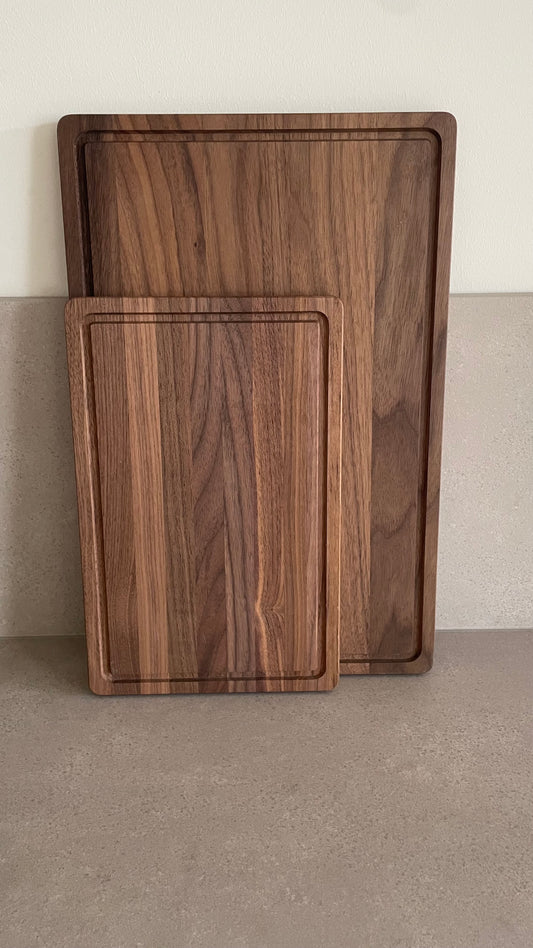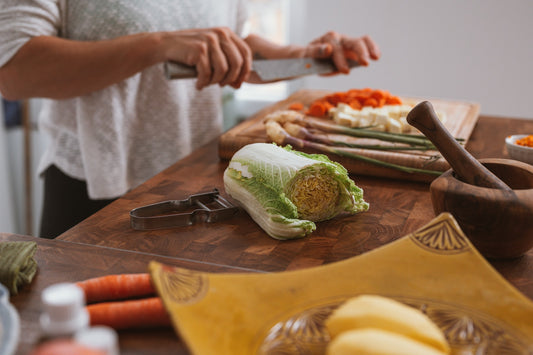Wooden cutting boards are an essential kitchen utensil. To protect the wood from damage and spoilage, it needs to be oiled regularly. In this blog post, we'll discuss how to properly oil cutting boards, which oils are best for use, and how to best care for them so your favorite kitchen item continues to look great and lasts a long time.
1. Why oil cutting boards?
A common question is: What should I use to oil cutting boards? It's important to use a high-quality , food-safe oil that doesn't run and is chemically safe. It's also important that the oil adheres well to the wood. You'll achieve the best results by using a special cutting board oil designed for use on wood. It's also possible to use a special, mineral oil-based cutting board oil. In any case, you should not use oils that are suitable for food preparation , as these can make the wood porous.
2. Which oils are suitable for cutting boards?
To keep your cutting board looking beautiful and healthy for a long time, you should oil it regularly with a suitable oil. You can find out which oils are suitable and how to oil your cutting board here. Linseed oil, castor oil, jojoba oil, nut oil, olive oil , or even beeswax are best suited for oiling. To start with, it is advisable to use a standard oil, as these are relatively inexpensive. However, some oils can also cause a strong odor, which is why it is recommended to use a high-quality oil. In any case, it should be made from natural ingredients and not contain silicone oils. Before oiling your cutting board, it is best to clean it thoroughly with warm water and dish soap. Then let it dry thoroughly and then spread the oil evenly over the entire cutting board. Let it soak in for a few hours and then wipe off any excess oil. This way, your cutting board will retain its natural structure and you can enjoy it for many years.
3. How is the oil applied?
It's important that you use the right products to oil your cutting boards. You can choose from specialty cutting board oils, which consist primarily of linseed oil, pumpkin seed oil, or olive oil. These oils are natural and rich in vitamin E, a natural antioxidant. They are also tasteless and odorless , making them ideal for use on wooden cutting boards. Although not strictly necessary, you can also oil your cutting board with a mixture of mineral oil and beeswax. This combination protects the wood from moisture without creating a strong odor. However, always try to avoid mineral oil and other synthetic oils, as they can damage the wood and reduce the lifespan of the cutting board.
4. When should you repeat the care of the cutting board surface?
Clean and oil your cutting board regularly. Treating your cutting board with oil will ensure a long and healthy lifespan. After each cleaning, apply the oil evenly to your cutting board and polish it to create a beautiful, shiny finish. Repeat this process every 6 months to keep the board in good condition.
5. Conclusion
To keep your cutting board looking its best for longer and to optimize its cutting properties, it is important to oil it. You can use a high-quality , food-safe oil such as linseed oil, walnut oil or olive oil. Before applying the oil, you should clean and dry the cutting board thoroughly . Then apply the oil evenly with a clean cloth and let it work for a few minutes. Finally, you can wipe off any excess oil with a clean kitchen towel. For best results, you should lightly oil the cutting board after each use and oil it thoroughly once a month . This way, your cutting board will retain its best properties and you can enjoy it in the kitchen for longer.











